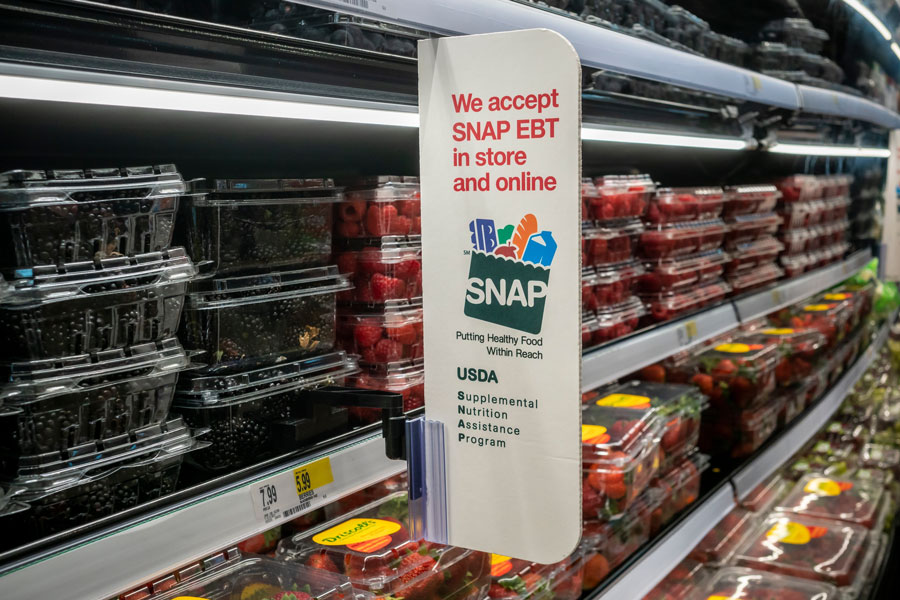
LONG ISLAND, NY – The recently passed “One Big Beautiful Bill,” pushed through by President Donald Trump, is set to deliver sweeping changes to both the federal tax code and public assistance programs. For many Long Island homeowners, the legislation offers long-awaited relief through expanded tax deductions. But for individuals relying on government aid, the bill brings new eligibility rules that could result in the loss of critical benefits.
At the heart of the legislation is a substantial increase in the cap on State and Local Tax (SALT) deductions – from $10,000 to $40,000 – for households earning under $500,000 annually. This adjustment is especially meaningful in high-tax regions like Nassau and Suffolk Counties, where property and local taxes often exceed the previous cap. With this new provision, many working families stand to save thousands on their federal tax returns.
The tax changes are being hailed by homeowners and local professionals who say Long Island residents have been disproportionately burdened by the prior SALT limits. Many view this adjustment as a correction that finally acknowledges the region’s high cost of living and heavy tax load.
However, while the bill offers financial relief to working households, it also imposes stricter requirements for those receiving Medicaid and SNAP benefits. Under the new rules, able-bodied adults between the ages of 18 and 64 must work a minimum of 80 hours per month, attend job training, or participate in other qualifying activities to remain eligible for assistance. Those who fail to meet these requirements risk being removed from the programs.
Though the bill doesn’t slash the funding for these services outright, the eligibility changes are expected to result in millions losing coverage nationwide. In New York, state officials estimate that as many as 1.5 million people could lose Medicaid coverage alone. On Long Island, this could hit lower-income communities especially hard, creating uncertainty for those who depend on assistance to access medical care or afford basic necessities.
Hospitals and local healthcare providers are bracing for the impact. With fewer people qualifying for Medicaid, facilities are likely to see more uninsured patients and greater levels of uncompensated care. New York estimates the state could lose up to $8 billion in healthcare funding, potentially threatening tens of thousands of jobs and billions in associated economic activity.
Public reaction has been mixed. Supporters of the bill argue it rewards working families and encourages self-sufficiency, while critics say it could create barriers for individuals who may struggle to meet the work thresholds due to circumstances such as lack of child care or reliable transportation.
It’s important to note, however, that the bill includes exemptions for those with documented disabilities, older adults nearing retirement age, and individuals serving as caregivers for disabled family members or young children. These groups are not expected to lose benefits under the new rules, provided their status is properly reported and verified. Still, administrative burdens and paperwork requirements could pose challenges for some recipients during the transition.
Top Questions and Answers on How Trump’s “Big Beautiful Bill” Affects Long Islanders:
What is the “Big Beautiful Bill” and why does it matter to Long Island?
The bill is a sweeping federal legislative package signed by President Trump that changes both tax policy and public assistance rules. It directly affects Long Island because of the region’s high property taxes and significant reliance on programs like Medicaid and SNAP.
How does the bill help Long Island homeowners?
It raises the SALT (State and Local Tax) deduction cap from $10,000 to $40,000 for households earning under $500,000. This gives many Long Island homeowners thousands of dollars in additional federal tax relief each year.
Will this benefit all homeowners equally?
No. The benefits are most significant for those who pay high property taxes and have enough income to itemize deductions. Renters or lower-income residents may see little or no benefit.
Who could lose benefits under this bill?
Able-bodied adults between 18 and 64 who are not working at least 80 hours a month or enrolled in job training may lose access to Medicaid or SNAP benefits if they don’t meet new work requirements.
Are there any exemptions to the new work rules?
Yes. Older adults, people with documented health conditions, and caregivers for children or disabled family members are exempt from the new requirements, as long as they meet reporting guidelines.
Will people lose benefits immediately?
No. There will be a rollout period, but those who don’t comply with the new rules could be disqualified over time. States will need to verify eligibility, and missed paperwork or failure to report may lead to loss of coverage.
How might this affect Long Island’s hospitals and healthcare providers?
Hospitals could see an increase in uninsured patients, less Medicaid reimbursement, and higher levels of uncompensated care. New York State estimates billions in potential losses to the healthcare sector.
What are supporters of the bill saying?
Supporters believe the bill rewards hard-working taxpayers and encourages personal responsibility. They view the tax relief as long overdue and see the work requirements as a way to reduce long-term dependency on government aid.
What are critics of the bill saying?
Critics argue that the bill punishes vulnerable populations, especially those facing employment barriers like lack of child care or transportation. They warn of disruptions in healthcare access and increased poverty risks.
How soon will Long Islanders see changes from this bill?
Tax relief will be noticeable in the upcoming tax season. Changes to public assistance programs will take effect gradually, depending on how quickly New York implements the new work requirement systems.


